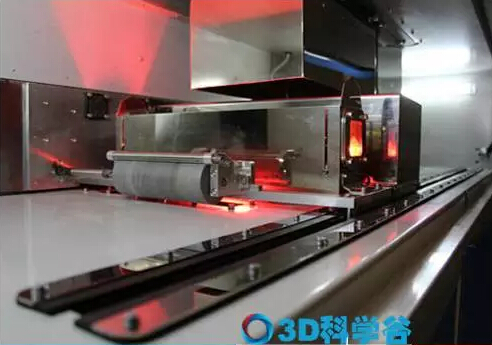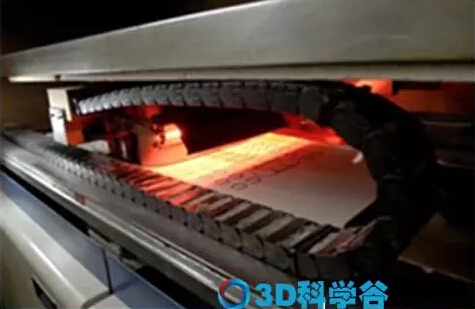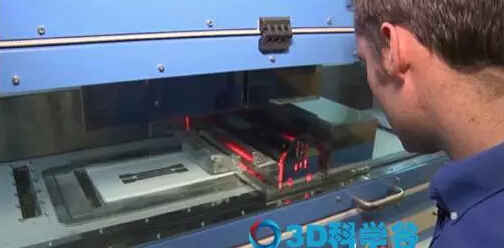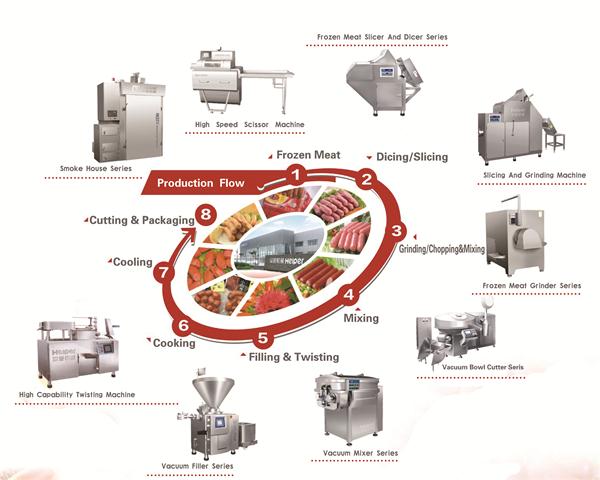Mass customization is possible? Metal sintered 3D printing speed is increased by 100 times
(Editor)
Helper have designed and manufactured food processing machines and
equipment since 1986. Now we can provide our clients excellent solutions in the
field of meat and pastry processing, such as sausage and ham production line,
quick frozen leisure foods, pet foods and cheese processing, fresh and cooked
noodle line, dumpling and bakery products etc. The company has been obtaining
success through the persistence of quality and service, as well as by knowing
customers, understanding products, implementing diversification competitive
strategy and focusing on high quality and good performance machinery research
and development.

High-speed sintering vs. laser sintering Although additive manufacturing is relatively cheaper than traditional methods in the manufacture of complex parts, it is not economical to enter mass production. But there are always challengers in the market. The new challengers are from the Department of Mechanical Engineering at the University of Sheffield.
Making plastic parts layer by layer with digital instructions is a very slow process compared to traditional methods. This is why the most advantageous area of ​​current additive manufacturing is the manufacture of small batches of niche products such as dental implants and hearing aid housings. The University of Sheffield's achievement is to produce thousands of small and complex parts through additive manufacturing. 
Compared to traditional injection molding techniques, additive manufacturing can greatly reduce the use of materials and avoid the use of expensive mechanical tools, in addition to achieving some complex shapes. Achieve more practical, uniquely designed structures that can help, for example, make cars and airplanes lighter and more energy efficient.
Hopkinson-Neil, a professor of mechanical engineering at the University of Sheffield in the UK, has been developing new methods for more than a decade, called high-speed sintering.
Laser sintering machines use a single-point laser to melt powdered plastic polymers, which are expensive and slow. Professor Hopkinson uses infrared lamps and inkjet printheads instead of lasers. The printhead delivers the material quickly and accurately to the powder bed. The infrared melting then solidifies the powder into a shape, which is then the next layer, which is much faster than laser sintering. 
Hopkinson's team showed that high-speed sintering is 100 times faster than laser sintering. Moreover, high speed sintering can be cost competitive with injection molding to produce millions of small and complex parts. The University of Sheffield is building such equipment with funds backed by the British government. Of course, to truly compete with injection molding, there are still many areas to be developed for high-speed sintering, including currently sinterable materials that are much smaller than injection molding materials.
In addition, this technology is very similar to what HP is developing, called multi-jet fusion technology, and HP technology also uses inkjet printheads that provide radiation-absorbing materials and other materials such as "refiner."
It is worth mentioning in the future that Hopkinson's rapid sintering technology is protected by patent intellectual property rights. The owner is Hopkinson's former institution, Loughborough University, which has been licensed to several units, including German 3D printing company. Voxeljet. Hopkinson's team is under construction and will be extended to print on conductive ink materials for use in printed electronics. 
Sausage Production Line,Meatball Making Machine,Frozen Foods Products Making Machine,Ham Production Line
Helper Machinery Group Co., Ltd. , https://www.ihelpergroup.com